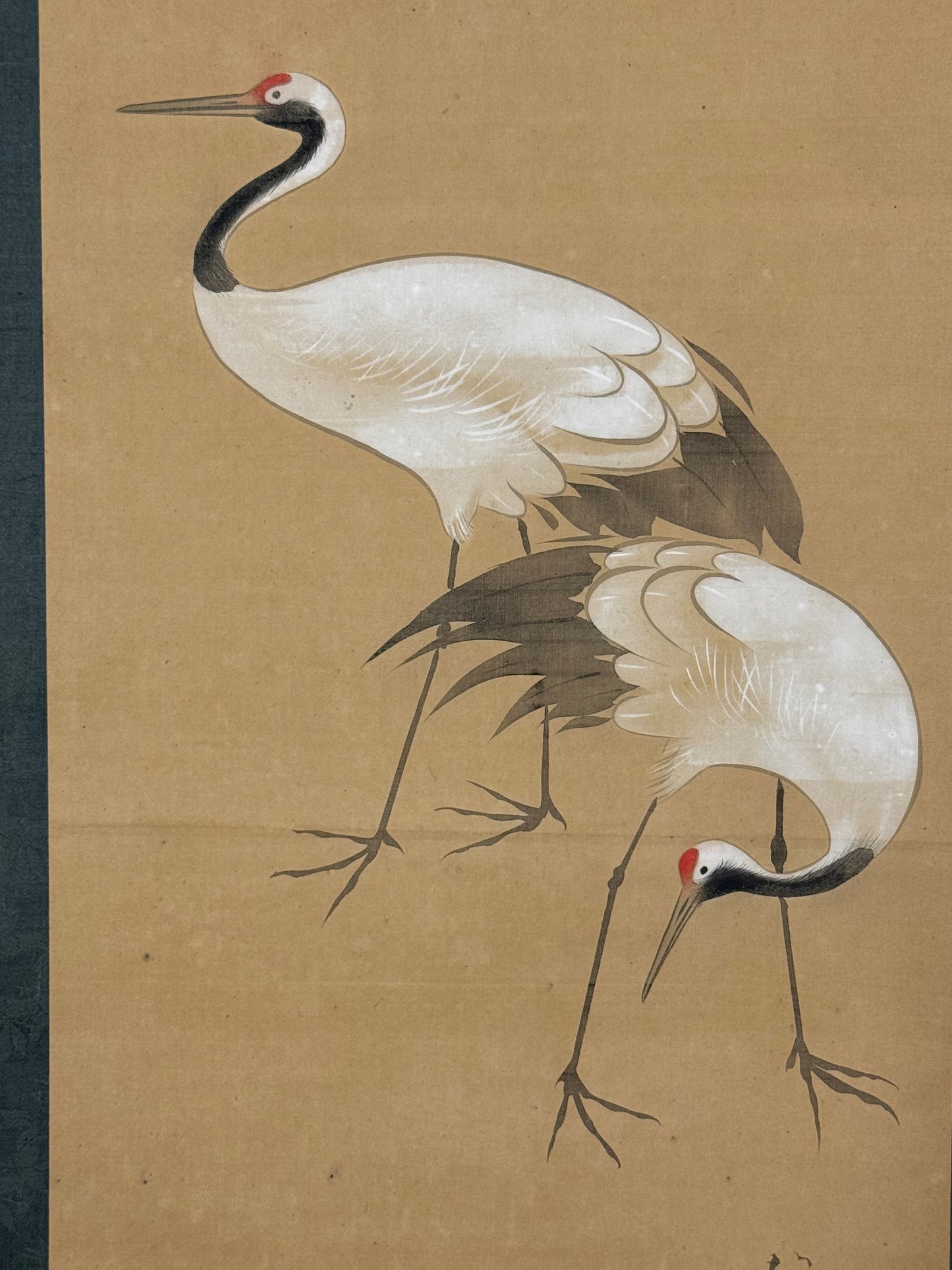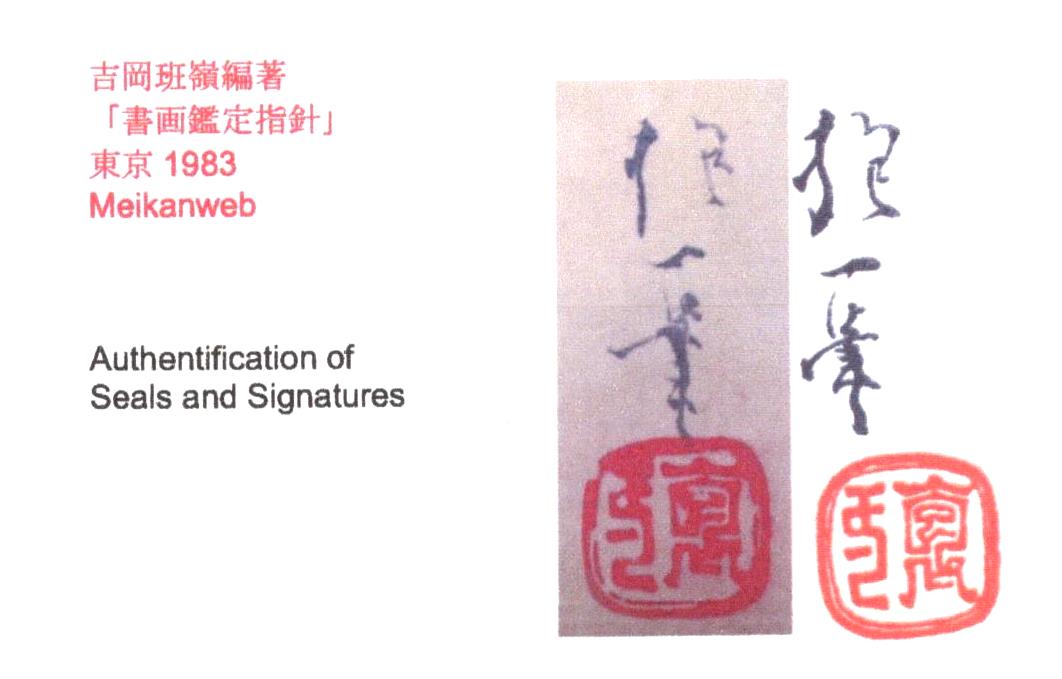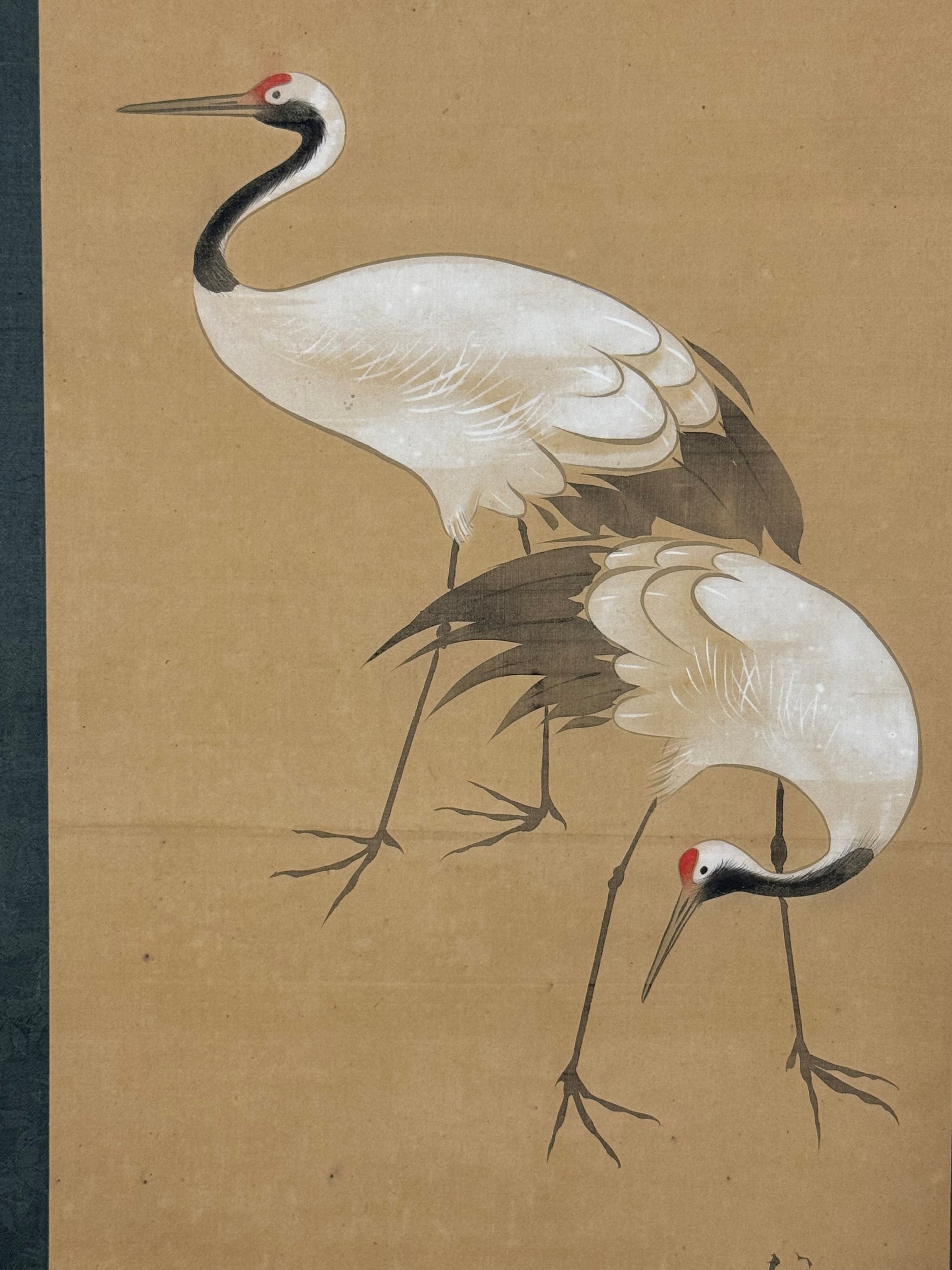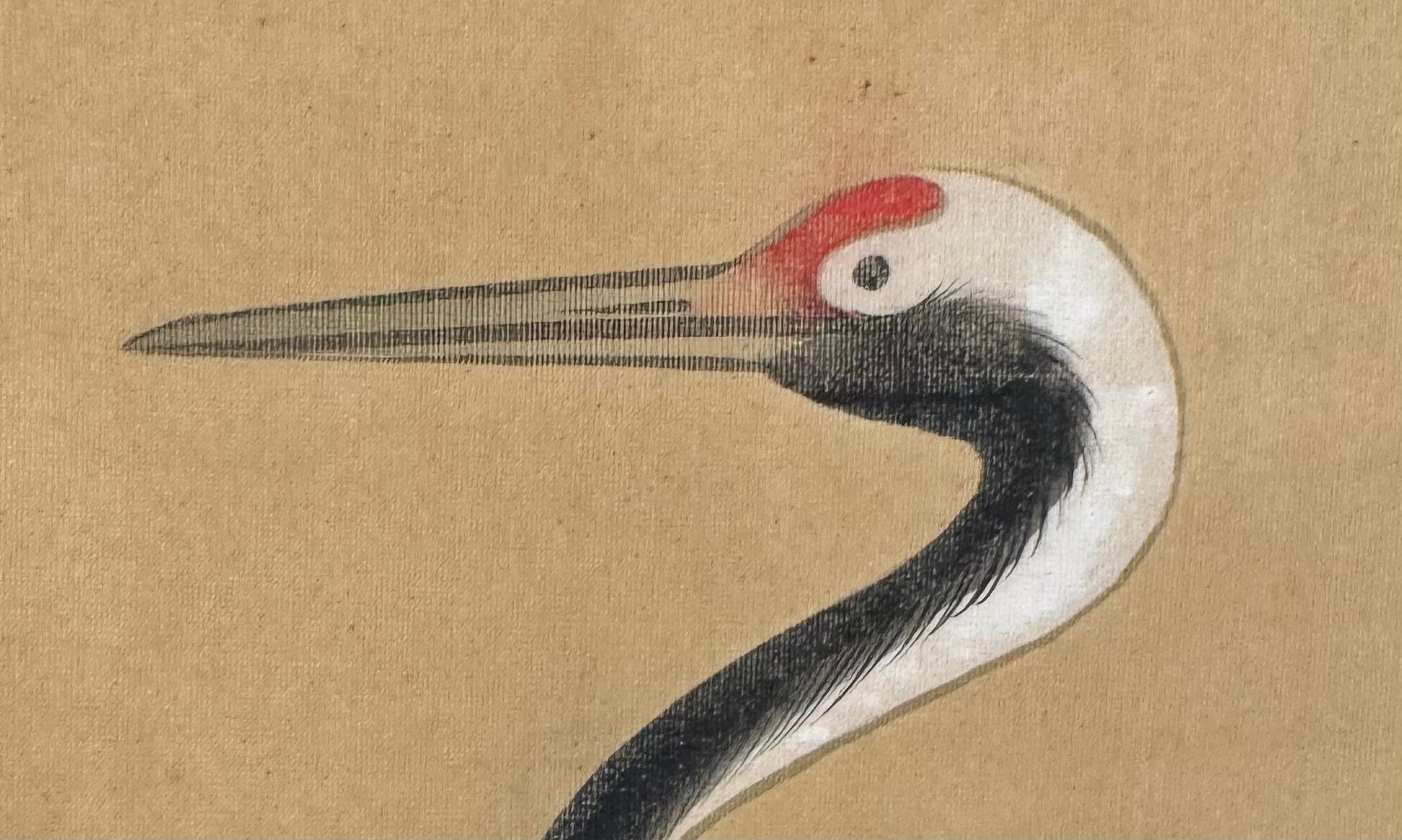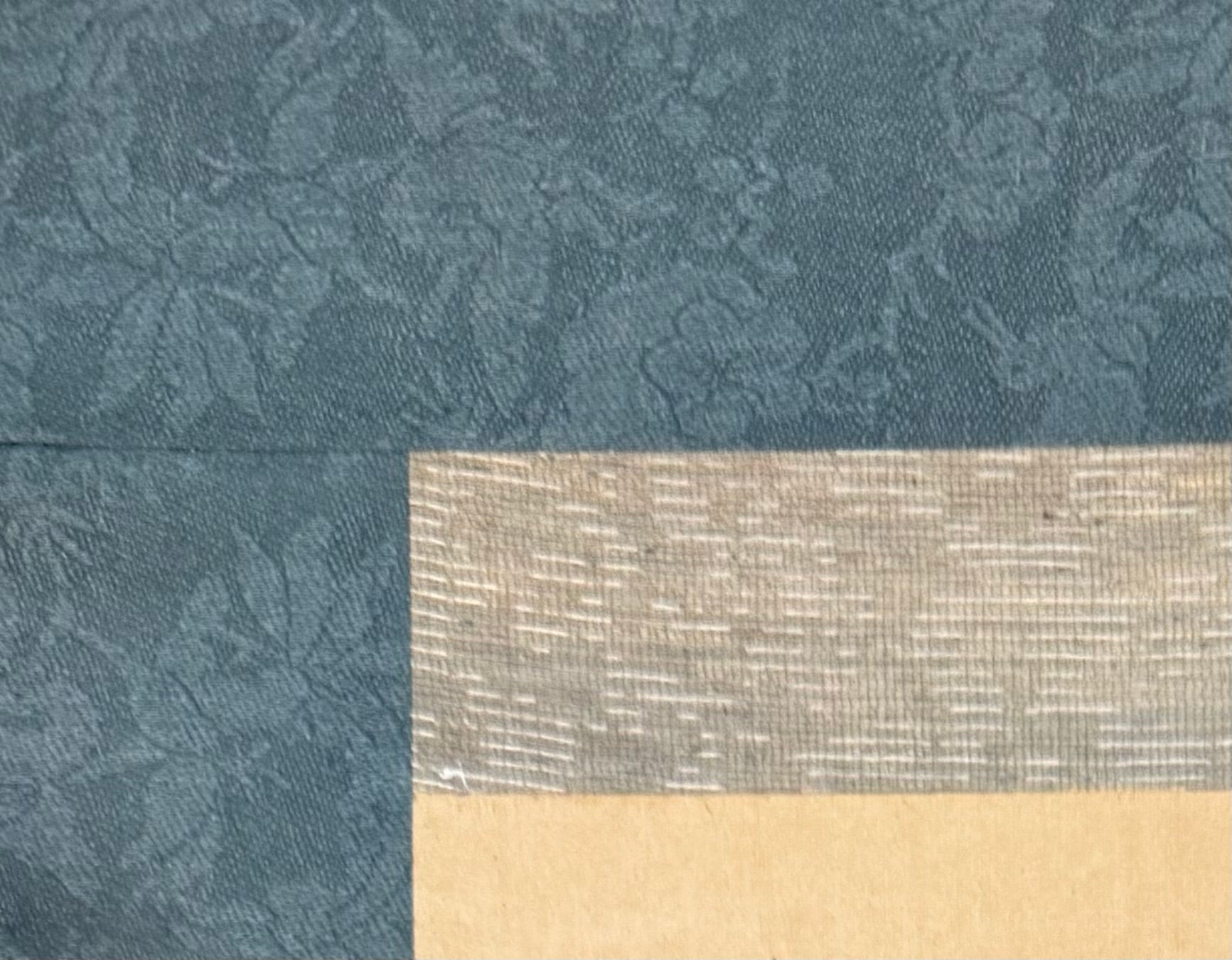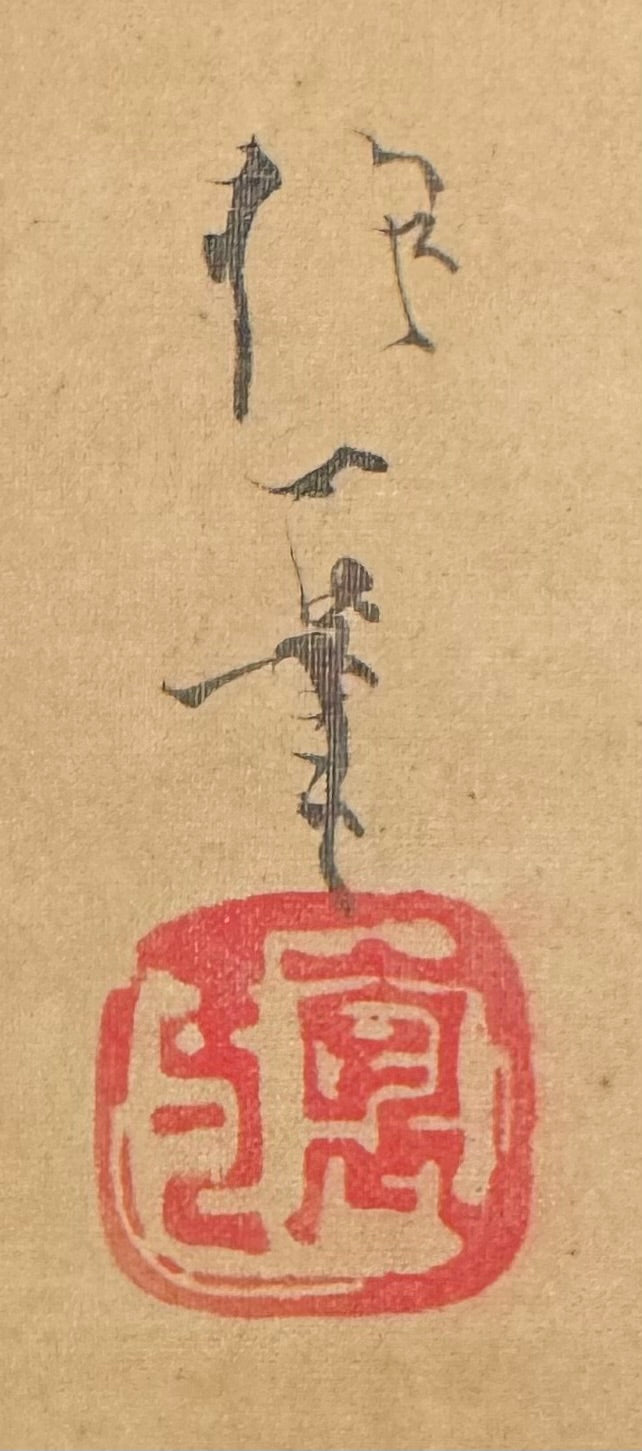Guignard Kyoto Collection
Two cranes | Sakai Hoitsu酒井抱一 | 1761-1829
Two cranes | Sakai Hoitsu酒井抱一 | 1761-1829
Couldn't load pickup availability
Cranes are symbols of a happy, long life. They accompany the god of luck Fukurokuju and are the representative birds of the island of Hōraizan, i.e. the "island of the immortals". Something of this symbolic character resonates in this picture too. The two birds are only related to each other, they stand in a completely neutral brown space. The position of their feet gives us the only spatial depth, because the bodies themselves are conceived more in terms of contour than volume (i.e. three-dimensional). This makes the play of lines all the more powerful. The lower bird is conceived from a half oval shape - the almost geometric line begins at the bottom of its head and ends perfectly in the curve at the tail feathers.
The way the painter very cleverly avoids the danger of the two bodies being isolated from the background with their white: he draws the brown of the ground coat into the plumage to indicate layers of feathers. The play of the legs and feet is also a masterpiece. It is wonderful how empty spaces are balanced here by the stilted legs and the splaying of the toes.
Hoitsu is one of the great representatives of the Rinpa school, which invented completely new artistic means from the 16th century onwards, or at least developed them from the court painting yamato e. Its theme is not realism, but forms, lines and play of colours. In this respect, we are dealing with a typical, elegant Rinpa picture.
